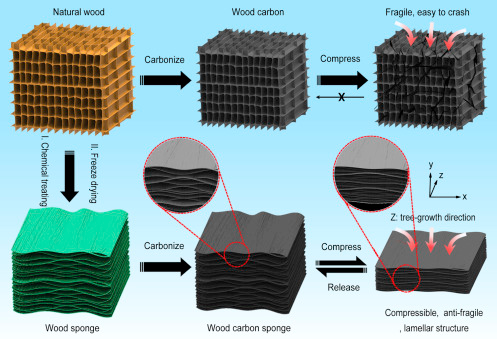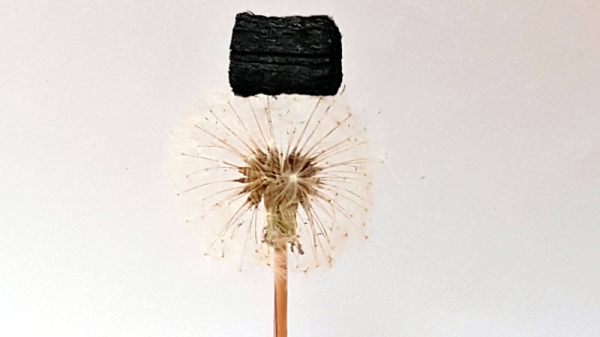Balsa wood has long been revered for its strength and lightweight composition, two properties that make it ideal for building model structures and airplanes. Researchers from the US and China have managed to make balsa even stronger and more useful. They’ve found a way to change its structure, turning it into a carbon sponge that’s strong enough to withstand repeated mechanical strain, but light enough to sit atop a dandelion gone to seed.
 Using common chemicals like lye and hydrogen peroxide, the scientists burned the hemicellulose and lignin fibers that make up balsa’s rectangular cell walls. Then they incinerated the sample at 1,000°C, which morphed the cellular structure into a cross between a helical spring and a honeycomb.
Using common chemicals like lye and hydrogen peroxide, the scientists burned the hemicellulose and lignin fibers that make up balsa’s rectangular cell walls. Then they incinerated the sample at 1,000°C, which morphed the cellular structure into a cross between a helical spring and a honeycomb.
Normally, carbonized wood just collapses under weight. But by first burning the cell fibers, the carbonization process results in a balsa carbon sponge capable of withstanding thousands of compressions before deforming. The researchers used the new material as part of a mechanical strain sensor prototype for wearable electronics, and they see a solid future for the material in water purification devices, supercapacitors, and rechargeable batteries.
This is big news for a society that’s trying to find more environmentally responsible ways to keep going full steam ahead in technological growth. Balsa trees grow fast, averaging 10+ feet per year, so this is a more sustainable alternative to graphene and carbon nanotubes. We’re excited to see what comes of this hack of nature. You can read the full paper here.
Even in its natural state, balsa is an interesting material. We once saw someone exploit its water retention abilities to make a rain-activated, shape-shifting prototype for roofing shingles.
Thanks for the tip, [Gervais].











